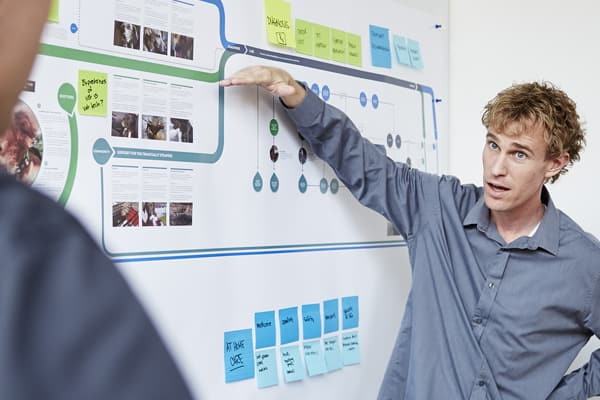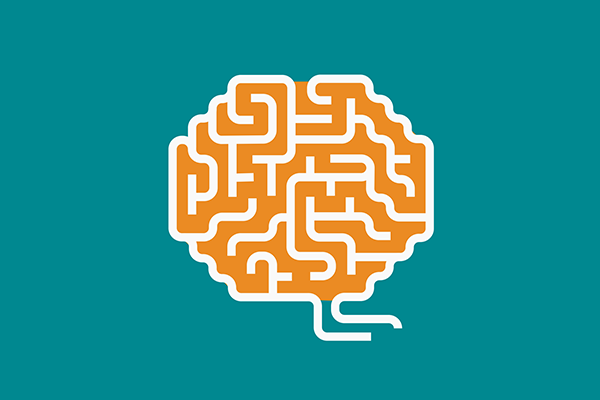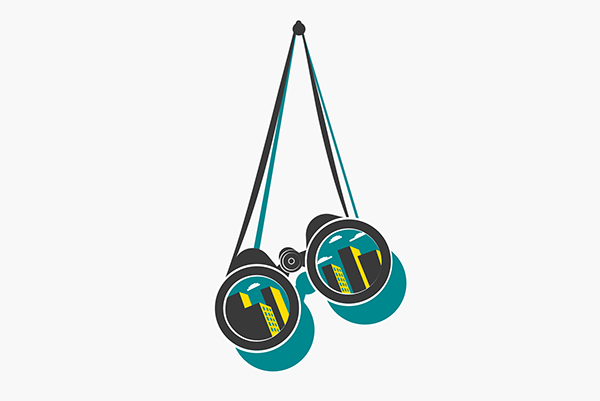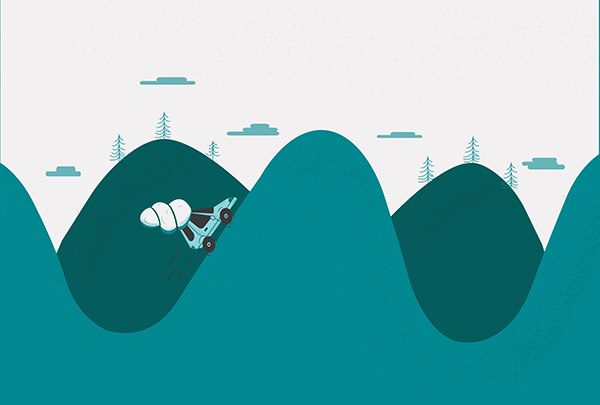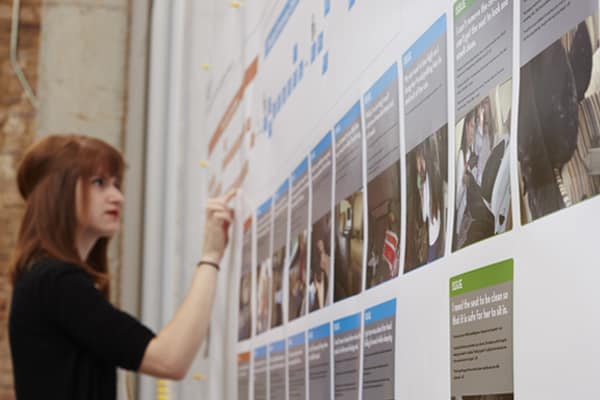CUSTOMER JOURNEY MAPPING: 10 SURE-FIRE STEPS TO SUCCESS!
In the ‘Age of the Customer,’ customer journey mapping is a technique that enables you to see and fully understand the customer’s experience from their perspective. Empowered buyers are demanding a greater focus on their needs, habits, and behaviors with an expanded concept of value, and delivering on this, we need to gain a more intimate and holistic understanding of who they are as people. Value is now very personal, and consumer expectations are changing!
It’s no longer enough to incorporate the implicit qualities of excellent functionality and usability, as well as the explicit qualities of an appealing look and feel of a product or service. Organizations and companies need to discover new, attractive attributes by considering the whole ‘customer experience’ a person has with the product or service over time.
Companies slowly have to walk away from the methods that got them where they are today. Traditional barriers to entry in any given market, such as manufacturing strength and distribution power, will no longer solely be enough to sustain competitive advantage and achieve your business goals. The new role for marketers, service providers, and manufacturers is to come up with a great customer experience that people can’t help talking about and then consistently delivering on it, over and over and over again!
Using Customer Journey Mapping to Envision the Future State
At THRIVE, we extensively use customer journey mapping to define new products, services, and omnichannel experiences. It is the process of tracking and describing all the experiences a customer has and understanding what they encounter and their visceral responses to their experiences. Customer journey mapping is a simple and powerful technique any company can use to gain a stronger experience orientation by simply walking in the customer’s shoes to understand their point of view.
However, not all customer journey maps are created equal. Most fail to identify how to improve the user journey from onboarding to use to follow-up and envision the ideal future state. It’s not enough to create customer empathy; an effective customer journey map should help you prioritize and focus on the touchpoints that generate the most value for the customer and create a visual representation of the ideal experience.
Here are THRIVE’s ten sure-fire steps to successful customer journey mapping that will help you translate customer statements and behaviors into actionable initiatives and tactics:
1. Anticipate the Customer Journey
Spending some time upfront and mapping the territory you will explore before going into the field is critical for the Customer Journey Mapping process. Hosting a workshop to bring together all your customer insights and understanding is an excellent way to engage stakeholders in the process and break down any organizational silos; keep it high energy, inspirational and engaging. To provide context and scope for the research, we suggest focusing on three (3) simple questions to maximize your investment in your upcoming study:
What Do We Know?
The insights you already have that can be supported by facts garnered from your own industry experience and/or past or prior research.
What Do We Think We Know?
These are your insights or working hypotheses that need to be validated by or challenged with additional primary research and learnings.
What Don’t We Know?
The knowledge gaps that need to be filled with primary research and/or learnings.
2. Get Focused, Be Targeted
Before going into the field to collect the voice of the customer, it is imperative that you have a clear picture of what you want to achieve and whom you need to participate in the process. Focus on the following critical elements to bring clarity and purpose to the study:
Define Your Strategic Target: You cannot be everything to everyone; you need to focus on a specific target and understand their current pains and frustrations and what will constitute new value to them in the future. Creating a set of hypothesized customer personas can be helpful here to determine the behaviors you need to observe in-field to test the hypothesis.
Prototype Your Customer Journey Map: Building quick sketches of the anticipated journey for your strategic target is a great way to form your working hypotheses and anticipate what you expect to see when observing customers. Be clear about the map, its scope, scale, and offshoots, noting down all the steps you think people will go through and identifying the channels people will use at each step in real-time.
3. Capture the Experience
Experiences are tied to the passage of time, so you need to engage them in the moment to understand customers. Ethnographic research methods, such as shadowing and observation, help you enter the moment and should be used as much as possible when in-field, along with structured interviews to capture their activities, repertoires, and emotions. Customer journey mapping should emphasize and uncover what customers think and feel as they experience a specific product or service and the qualities they value. Effective customer engagement depends on it. Customers are no longer passive but a valuable and intrinsic part of the process. Consider them holistically as a person and focus and how they use your products and services in the context of their daily lives and, above all – engage them.
4. Identify the Touchpoints
Identify the customer touchpoints for each step of the customer journey map, think about all the physical and virtual interactions the customer has from a user experience point-of-view. It is crucial to understand how a customer interacts with the different touchpoints, what is done, and when. This provides you with a holistic assessment of your brand’s current state relationship with the customer and provides you with an evaluation of the impact and performance of the touchpoints you already have in place. From here, you will identify which customer touchpoints are redundant, the gaps that exist, how customers are currently experiencing your brand, and where to focus.
5. Identify the Moments of Truth
Moments of truth happen when customers invest a high amount of emotional energy in the outcome. These points in the journey are where customers may pause, evaluate the experience, and make crucial decisions. Address a customers’ needs at this moment, and you’ll get an engaged, delighted customer. Fail to meet their needs, and you risk losing a customer through low customer satisfaction. These ‘moments of truth’ are the key points on your customer journey map and show where you can act to transform the experience and differentiate your brand through an elevated level of customer support and engagement.
6. Find the Pain Points
Strong emotions often occur when a customer has a problem. At this point, you have the most significant opportunity to create an emotional bond. Look at the customer journey map to identify the issues and pain points people experience that need you to address. Find the root causes and capture them using emotive words to bring their pains to life with clear calls to action. After you’ve identified the emotional lows and roadblocks to a great experience, you can frame the key insights and opportunities that address customer pain points at each stage of the customer journey.
7. Amplify the Emotional Highs
Opposite the pain points are the emotional highs of the customer journey. The journey mapping process should amplify these moments and provide you with an opportunity to stand apart from your competition and a way to positively engage with the customer in a way that drives customer loyalty. You should always build on your current state highs; this is where you already have equity – but be mindful – it will only create an impact if the customer values it. Be selective in where to focus; touchpoints are expensive to maintain and make sure you are investing in the ones that truly deliver new value for maximum ROI.
8. Explore New Possibilities
Use the customer journey map to generate new ideas and concepts collaboratively with your team. Facilitate ideation workshops that take the insights, opportunities, and principles that populate the map and put them into action. Work together to improve and re-envision the customer experience. The resulting ideas, concepts, and systems will potentially build more meaningful relationships between the customer and the broader ecosystem of channels, touchpoints, places, and people that you call your brand.
9. Envision the Ideal Customer Journey
To envision an improved and dramatically different customer experience, you’ll need to create a visualization of the ‘Ideal Customer Journey Map.’ This is a new experience map (separate from the current state map) that moves beyond the experience you have just documented and helps to define the desired future state by mapping and visualizing what real customers would ideally like to do, think, and feel as they interact with your brand’s touchpoints on their way to satisfying their unmet needs and desires. Don’t be afraid to dream! Integrate the ideas and concepts you developed in Step 8, create provocative images of the future, and move beyond day-to-day business as usual thinking to inspire your team members.

10. Bring the Customer Journey Map to Life
Turning your customer journey map into a compelling visual story means thinking through both the work you’ve done and the work you want to inspire. What action and next steps do you want your map to initiate? How do you want to use your customer journey map within your organization in the map short-, mid-, and long-term? Remember, a journey map is a widely shared artifact, and your goal is to craft a compelling piece of communication that can stand on its own and inspire new ideas. Invest in design – communication is everything – don’t let all your great work fall at the last hurdle. It should look and feel compelling and connect with the communication style of your organization.
This new reality for developing products, services, and delivering experiences is increasingly personal and one where customers are indeed in control. Customer journey mapping can help companies identify and create new value that is meaningful and personal to consumers. It is a vital tool for designing customer retention and loyalty across the entire product and service lifecycle and a strategic way to ensure you are hitting your metrics; conversion rates, net promoter scores, or excellent customer feedback through social media and other channels.
THRIVE’s team of researchers, strategists and designers specialize in going where people live, work and play to understand how life is actually lived to intimately get to know their values, needs, and behaviors. The result is a holistic understanding of people in the context of their lives and the definition of actionable insights that help you identify new ways to create value and lay claim to untapped areas of opportunity.
Like what you’re reading? Let’s talk more and see how we can help.
People Also Ask These Questions About Customer Journey Mapping
Q: What are the key steps in creating a customer journey map?
A: The key steps include: defining clear objectives, gathering customer data, identifying touchpoints, mapping the current state, analyzing insights, identifying gaps and opportunities, brainstorming improvements, prioritizing actions, implementing changes, and measuring results.
Q: How do I gather customer data for journey mapping?
A: You can gather customer data through various methods, including surveys, interviews, focus groups, customer feedback, analytics tools, and CRM data. It’s important to collect both quantitative and qualitative data to get a comprehensive view.
Q: What are customer touchpoints?
A: Customer touchpoints are the interactions or points of contact between a customer and your brand. These can include website visits, social media interactions, customer service calls, in-store visits, emails, and more.
Q: How do I identify pain points in the customer journey?
A: Pain points can be identified by analyzing customer feedback, monitoring customer behavior, and conducting usability tests. Look for areas where customers experience frustration, confusion, or drop-off in the journey.
Q: How can I prioritize actions for improving the customer journey?
A: Prioritize actions based on their potential impact on customer satisfaction and business goals. Consider the feasibility, cost, and time required for implementation. Focus on quick wins as well as long-term strategic improvements.
Q: How do I measure the success of customer journey mapping?
A: Success can be measured by tracking key performance indicators (KPIs) such as customer satisfaction scores, Net Promoter Score (NPS), conversion rates, customer retention rates, and overall revenue growth. Regularly review and adjust your journey map based on these metrics.
Q: Can customer journey mapping be used for B2B companies?
A: Yes, customer journey mapping is valuable for B2B companies as well. It helps understand the complex decision-making process of B2B customers, identify key stakeholders, and improve touchpoints to enhance the overall experience.
Q: How often should I update my customer journey map?
A: Customer journey maps should be updated regularly to reflect changes in customer behavior, market trends, and business objectives. It’s recommended to review and update the map at least once a year or whenever significant changes occur.

